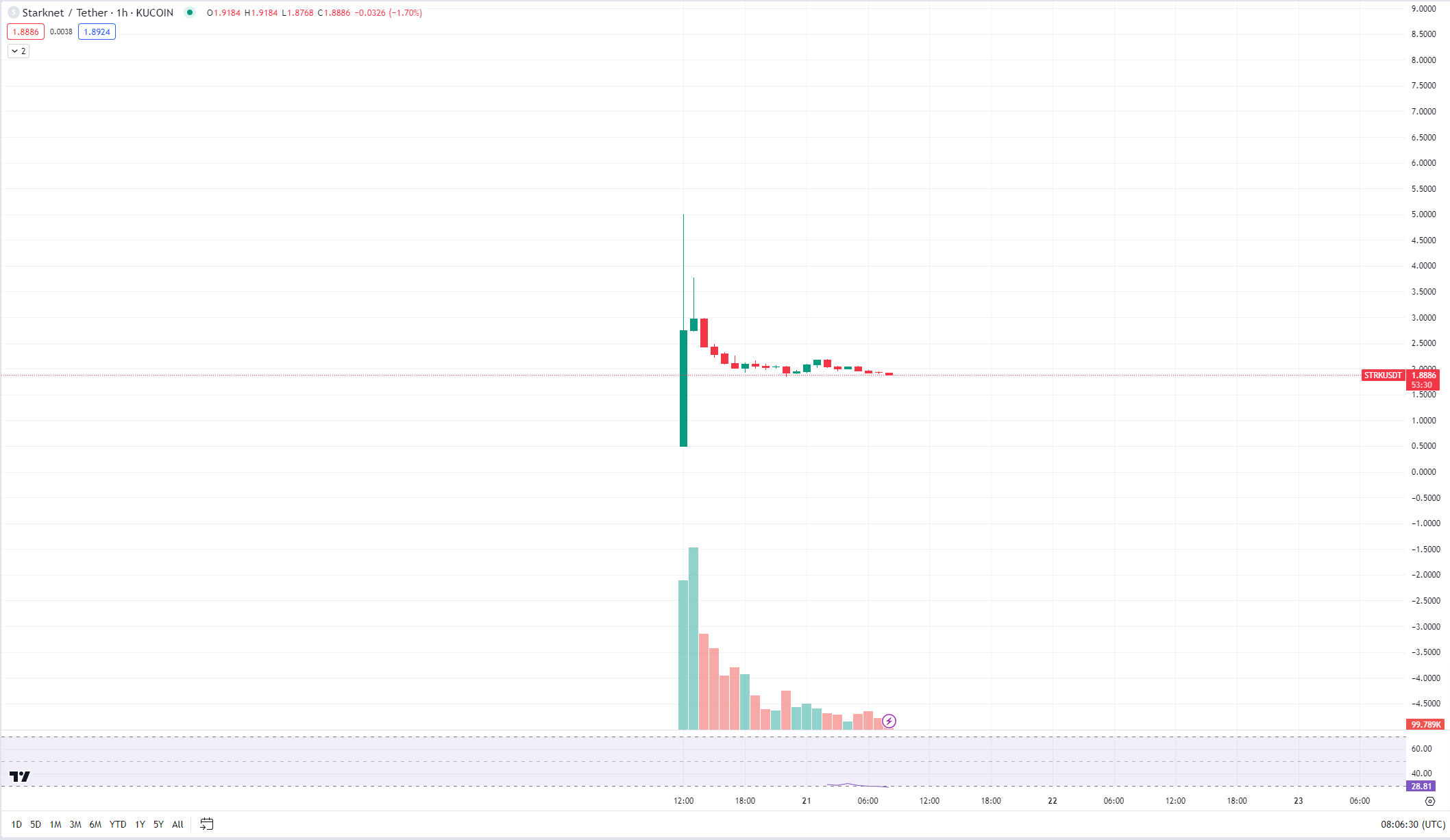
Disclaimer: The opinions expressed by our writers are their own and do not represent the views of U.Today. The financial and market information provided on U.Today is intended for informational purposes only. U.Today is not liable for any financial losses incurred while trading cryptocurrencies. Conduct your own research by contacting financial experts before making any investment decisions. We believe that all content is accurate as of the date of publication, but certain offers mentioned may no longer be available.
The Starknet ecosystem has recently been at the center of a significant security breach, marking one of the most substantial and successful Sybil attacks in the cryptocurrency space.
An aggressor managed to exploit the Starknet airdrop by using 1,361 wallets to accumulate and then transfer a colossal sum of 1,432,800 STRK tokens, valued at approximately $3 million, to a single wallet address, "0x027c…9078." Considering the fact that Starknet implemented relatively strong sybil protection, the success of this attacks raises some serious questions.

The attack methodology suggests that the individual behind this managed to bypass the one-wallet-one-claim rule that airdrops typically employ to prevent such exploitations. By claiming the airdrop across numerous wallets and aggregating the tokens into a single one, the attacker not only secured a massive amount of STRK but also demonstrated the need for more stringent security measures in token distribution events.
This incident unfolds in the backdrop of Starknet's recent listing on Binance, which propelled the token into a high-volatility phase. The market's response to the listing was initially positive, with a noticeable surge in trading activity and price. However, the euphoria was short-lived as the price retraced, following broader market sentiment and possibly impacted by the news of the airdrop attack.
This attack stands as a stark reminder (no pun intended) to developers of similar projects who plan on utilizing airdrop strategy for a token distribution that even the most sophisticated sybil protection strategies might not always work.
In terms of market performance post-listing, Starknet experienced typical behavior observed on newly listed assets. There was an initial spike in price, reflecting the influx of traders eager to capitalize on the listing. Subsequently, the price experienced a pullback, which often follows such volatile spikes, as early investors take profits and the market searches for new equilibrium.

 Dan Burgin
Dan Burgin Vladislav Sopov
Vladislav Sopov Arman Shirinyan
Arman Shirinyan Alex Dovbnya
Alex Dovbnya